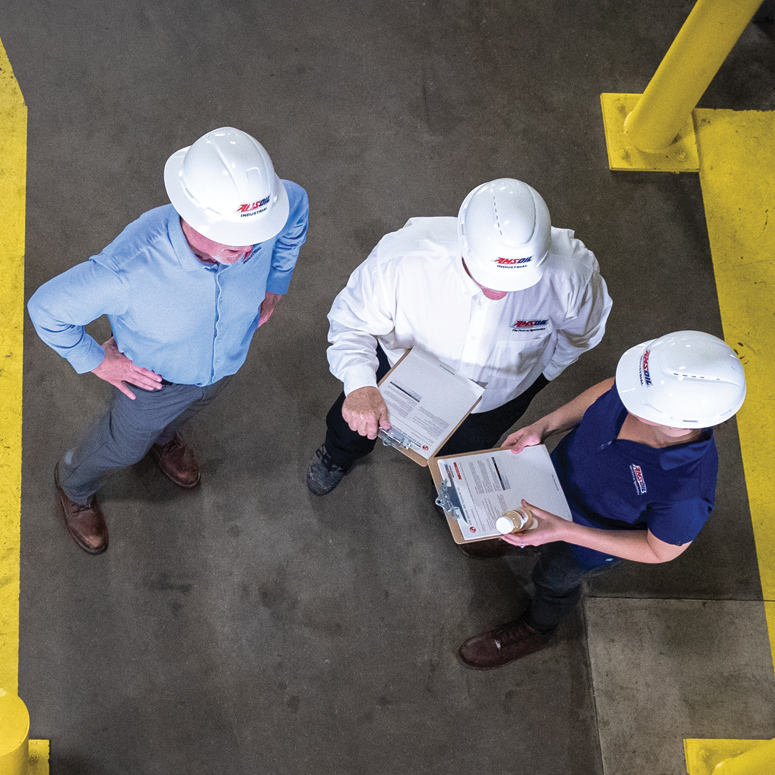Why You Should Practice Proactive Maintenance
Lubricants are an important part of your machinery because they extend the life of your equipment and allow friction-prone parts to move freely with less wear. Proper lubrication reduces wear particles and improves reliability of your machine’s components by extending equipment life and maximizing drain intervals, ultimately resulting in decreased maintenance and repair fees. The first step toward improved equipment life is developing a proactive maintenance routine to tackle issues early.
Types of Proactive Maintenance
Proactive maintenance implements actions focused on failure root causes rather than the symptoms caused by the problem. The main goal of proactive maintenance is to extend the life of equipment and increase productivity. Proactive maintenance should be seen as a journey rather than a quick fix, as it involves the collection and analysis of various data points. The first step is to implement data-collection software that allows the maintenance team to log and analyze information. This software and analysis allow the team to resolve issues before they become problems.
Next Steps:
Once the data-collection software is implemented, the next step is to begin implementing predictive maintenance methods by using detection tools to catch warning signs of problems before they cause catastrophic damage to your equipment. Examples of these methods include the following:
Fluid Analysis
Fluid analysis is a predictive maintenance tool designed to evaluate lubricant condition, component wear and contamination in industrial and fleet applications. Routine fluid analysis can detect lubricant or equipment issues before major problems develop.
Oil Sampling
Routine oil sampling is key to maintaining optimal cleanliness and provides essential insights to your oil’s health. Equipment health can be determined with more advanced testing methods and does not have to be routine. There are two types of oil sampling: routine and advanced.
Routine Oil Sampling is also known as routine oil analysis. It provides information about overall oil condition, viscosity, additives and cleanliness. It shows the condition of your oil and helps determine if you need to clean or replace it. Routine oil sampling also provides an indication of wear; however, the iron seen in routine oil analysis is very small in size (3 microns or less). Larger particles associated with poor equipment health can only be seen if advanced oil-testing methods are implemented.
Advanced Oil Sampling is performed when equipment health is in question, or perhaps once per year. It is not normally routine. Test methods like Analytical Ferrography (AF) can be implemented, indicating all ferrous metal particles of all sizes, unlike the normal or routine oil analysis that can only see iron particles 3 microns or smaller. AF also indicates particle types, which can provide information about the type of wear and possibly where it is coming from.
The Filter Patch Test is an advanced oil-analysis test that indicates varnish particles. Oil is filtered through a 0.45-micron filter and its color is determined by comparing it to known color codes. Darker colors indicate more varnish chemicals are floating in the oil. When the oil cools, these particles can solidify onto internal parts like servo valves and lead to system malfunction and downtime.
Using Portable Filtration
Filters are an important part of your equipment because they allow you to see what is happening inside your machine and oil. A portable filter can be removed from the machine, cut open and analyzed for contaminants like water, metal particles, paint chips and more.
Water in oil can exist in three states: dissolved, saturated and free. A small amount of water molecules may be dissolved in the oil and go undetected since they’re too small to see with the naked eye. However, once the lubricant has dissolved all the water it can, the solution becomes saturated and appears cloudy, which is known as emulsion. If more water is present after the lubricant is emulsified, it begins to separate, and the solution will have what is known as free water. Free water cannot mix or bond with the oil, and typically puddles at the bottom of reservoirs. Even a small amount of water can have a harmful effect on machine components and decrease oil life.
Metal flakes indicate machine wear and contaminated oil. Contamination may result in more machine wear and breakdown as the metal in the oil increases friction in the machine.
Paint chips in your filter may indicate that the inside of the oil reservoir is peeling off. They commonly originate from an inspection cover being taken on and off.
Maintaining optimal lubrication and cleanliness is vital to a stamping manufacturing process and the company’s total cost of ownership. If you are unsure of how to create a proactive/predictive maintenance plan or which services you need, the AMSOIL Industrial Team can provide recommendations.


